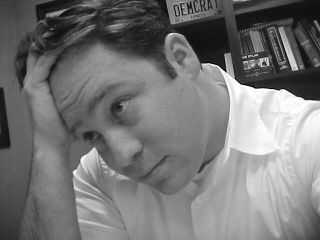The Truth About Reagan's Tax Cuts
people have been asking me about this so i post it here...
We're also sure to hear that Mr. Reagan presided over an unmatched economic boom. Again, not true: the economy grew slightly faster under President Clinton, and, according to Congressional Budget Office estimates, the after-tax income of a typical family, adjusted for inflation, rose more than twice as much from 1992 to 2000 as it did from 1980 to 1988.
But Ronald Reagan does hold a special place in the annals of tax policy, and not just as the patron saint of tax cuts. To his credit, he was more pragmatic and responsible than that; he followed his huge 1981 tax cut with two large tax increases. In fact, no peacetime president has raised taxes so much on so many people. This is not a criticism: the tale of those increases tells you a lot about what was right with President Reagan's leadership, and what's wrong with the leadership of George W. Bush.
The first Reagan tax increase came in 1982. By then it was clear that the budget projections used to justify the 1981 tax cut were wildly optimistic. In response, Mr. Reagan agreed to a sharp rollback of corporate tax cuts, and a smaller rollback of individual income tax cuts. Over all, the 1982 tax increase undid about a third of the 1981 cut; as a share of G.D.P., the increase was substantially larger than Mr. Clinton's 1993 tax increase.
Mr. Reagan's second tax increase was also motivated by a sense of responsibility — or at least that's the way it seemed at the time. I'm referring to the Social Security Reform Act of 1983, which followed the recommendations of a commission led by Alan Greenspan. Its key provision was an increase in the payroll tax that pays for Social Security and Medicare hospital insurance.
For many middle- and low-income families, this tax increase more than undid any gains from Mr. Reagan's income tax cuts. In 1980, according to Congressional Budget Office estimates, middle-income families with children paid 8.2 percent of their income in income taxes, and 9.5 percent in payroll taxes. By 1988 the income tax share was down to 6.6 percent — but the payroll tax share was up to
11.8 percent, and the combined burden was up, not down.

No comments:
Post a Comment